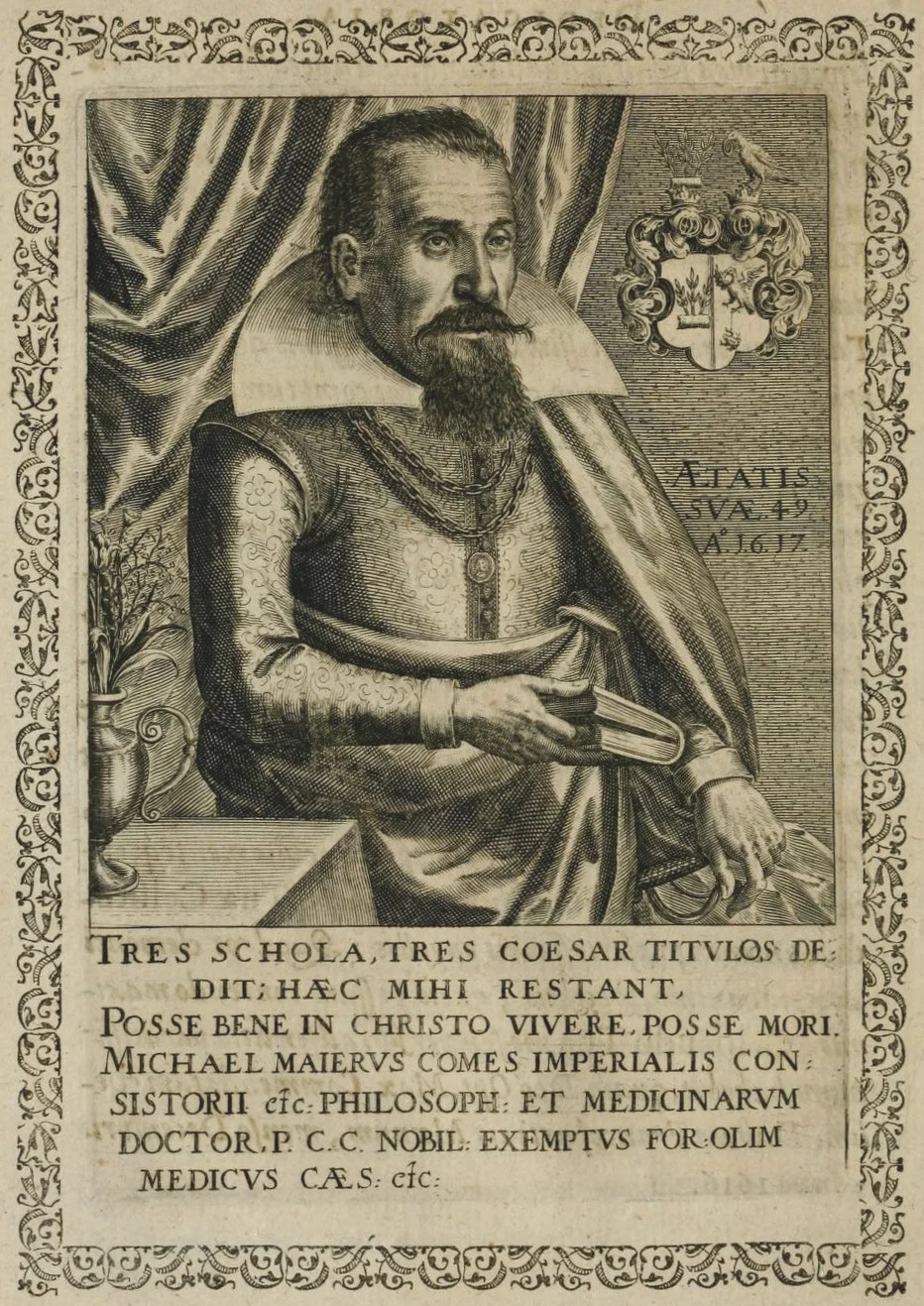
An ancient Rosicrucian New year’s card. Written by Michael Mayer. 1611
In December 1611, a unique letter made its way across Europe to England. This ‘greeting card’ was not just your ordinary correspondence for two reasons. First, this letter would become the oldest surviving Christmas card. The author of this card, a German alchemist named Michael Maier, had decided to send a Christmas card to the king of England, James I (1603–25) and his son Henry Frederick, the Prince of Wales. The text of the card was nothing out of the ordinary for those times, reading:
In honor of the birth of Christ, I hereby send my greetings to the most revered and effective sovereign, James I, King of Great Britain and Ireland, the defender of the Holy Faith, and my wish that you joyously celebrate the Nativity of Christ. With the greatest joy and prosperity, we begin this new year, 1612.
Blessed and consecrated by my humble service and obedience,
Michael Maier
German, Count Palatine.

Engraving. Michael Mayer. 1618/Wikimedia Commons
The second reason this card was unusual had to do with the mysterious rose Count Maier had drawn in the letter, which consisted solely of words. On the stem of the rose, the count’s heartfelt greetings to the king continued:
I pray that you will receive this scepter of joy. I wish you, the Kingdom, the King, and the Royal Household success in all of these eight wishes.
The eight wishes that Count Maier spoke of were the following eight phrases, which were written on each petal of the rose:
-
May you be divinely blessed
-
May you have a healthy body
-
May you live in peace
-
May you be rewarded for your labors
-
May you be victorious against your enemies
-
May you live a long life
-
May you have zealous piety
-
May you have a love for learning
On each petal, in a circular fashion, the author inscribed various pieces of advice to the king, such as "The greatest award one can receive is to live in health and be strong".
Count Maier pours even more kindness along the perimeter of the rose in the form of a poem, which he dedicates to His Holiness, the King of England, wishing him prosperity and divine blessings. The poem contains references both to biblical themes and ancient mythology, as well as the author’s wish that the ‘rose would never be blown away by the North Wind’. There is additional text along both sides of the exterior of the rose, including a repeat of the text encoded in the symbol as well as several passages from the Old Testament.

Illustration of a New year’s card in the shape of a rose
So why was there all this mystery in a simple greeting card?
In reality, Michael Maier was no ordinary admirer—he was instead a member of the secret and mysterious society the Order of the Rose and Cross, or the Rosicrucians. Legend has it that the order was founded by one Christian Rosenkreuz, a monk who during his travels to the Middle East had been given secret knowledge. Following this experience, he conceived of and created a society of alchemists and mystics whose mission it would become to reform mankind worldwide.
The Rosicrucian Order would go on to become popular at the beginning of the seventeenth century and would later become the foundation of the Freemasons. And so, this mysterious greeting card Count Maier sent the king was, in fact, a subtle attempt to bring this new, mystical field of study to the king’s attention. Unfortunately, this creative approach did not bear any fruit as the card never reached the king.
But in case you were looking for creative inspiration for your seasonal greeting cards, why not borrow from the ideas of the Rosicrucians?